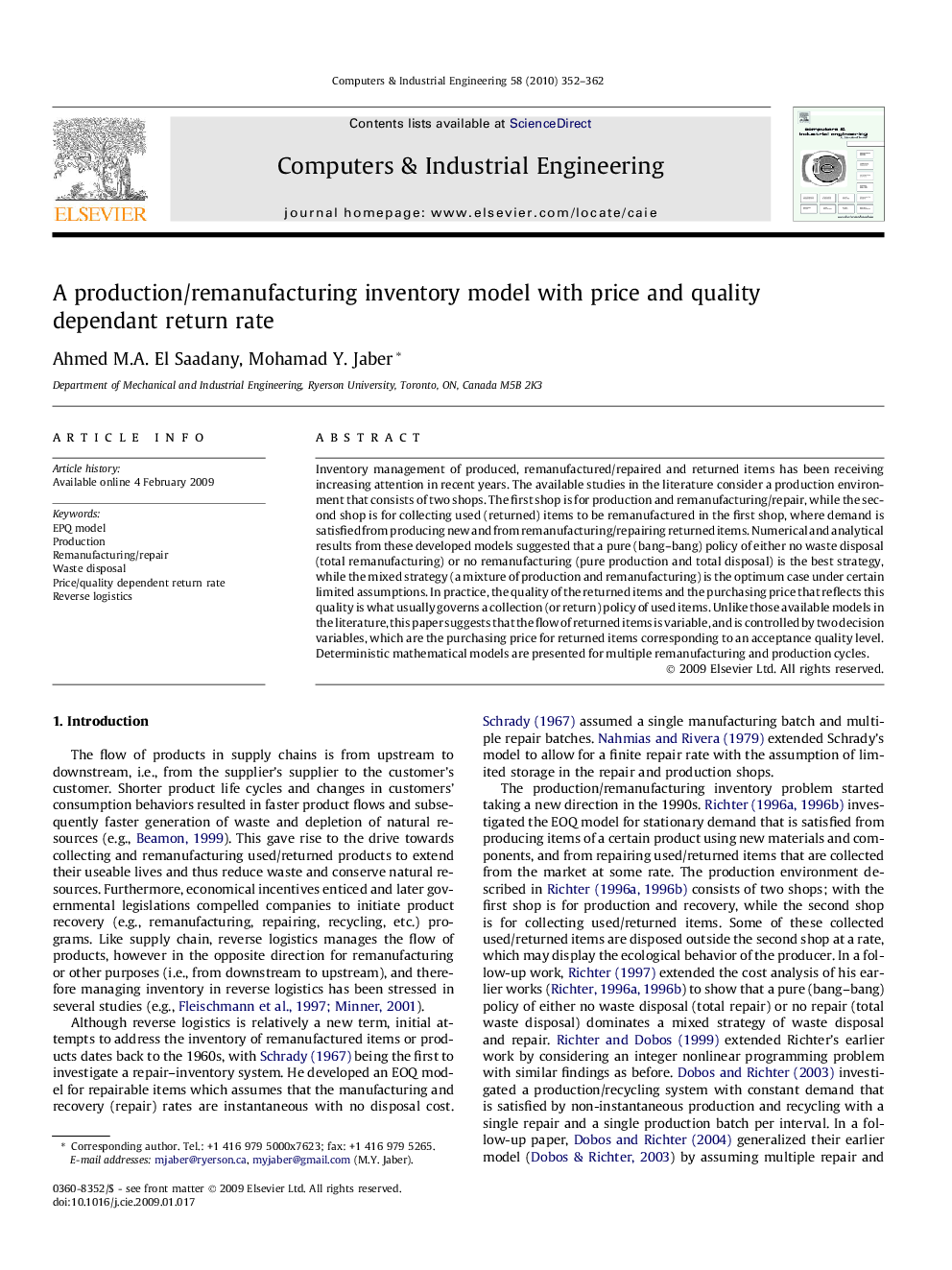| Article ID | Journal | Published Year | Pages | File Type |
|---|---|---|---|---|
| 1135034 | Computers & Industrial Engineering | 2010 | 11 Pages |
Inventory management of produced, remanufactured/repaired and returned items has been receiving increasing attention in recent years. The available studies in the literature consider a production environment that consists of two shops. The first shop is for production and remanufacturing/repair, while the second shop is for collecting used (returned) items to be remanufactured in the first shop, where demand is satisfied from producing new and from remanufacturing/repairing returned items. Numerical and analytical results from these developed models suggested that a pure (bang–bang) policy of either no waste disposal (total remanufacturing) or no remanufacturing (pure production and total disposal) is the best strategy, while the mixed strategy (a mixture of production and remanufacturing) is the optimum case under certain limited assumptions. In practice, the quality of the returned items and the purchasing price that reflects this quality is what usually governs a collection (or return) policy of used items. Unlike those available models in the literature, this paper suggests that the flow of returned items is variable, and is controlled by two decision variables, which are the purchasing price for returned items corresponding to an acceptance quality level. Deterministic mathematical models are presented for multiple remanufacturing and production cycles.
